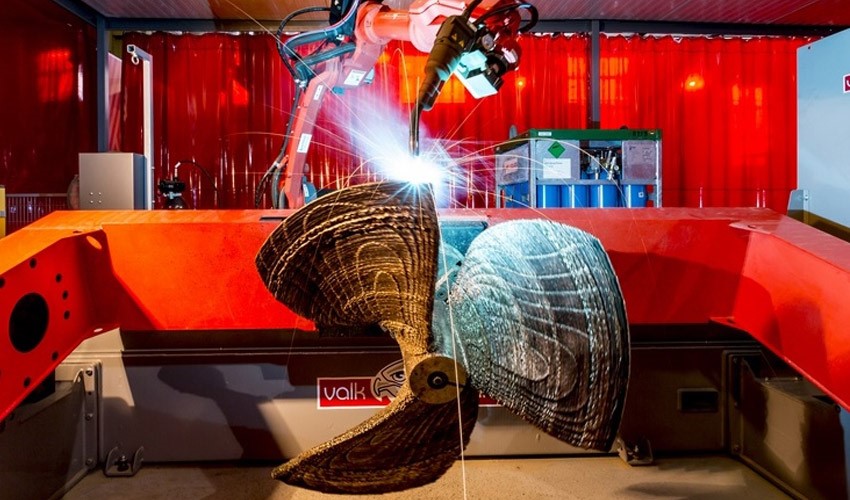& Construction

Integrated BIM tools, including Revit, AutoCAD, and Civil 3D
& Manufacturing

Professional CAD/CAM tools built on Inventor and AutoCAD
2 min read
Take a first look at Fusion 360’s new multi-axis deposition toolpath capability, now in extension preview.

With the November Fusion 360 update, all users now have access to the Additive Multi-Axis Deposition extension preview, which allows you to create multi-axis additive manufacturing toolpaths. This new toolpath capability primarily drives machines with Directed Energy Deposition capability. However, you can also use post-processing modification with other multi-axis deposition applications (e.g., FFF, large-scale AM, and concrete printing).
Many 3D printers are of a 3-axis configuration. 3-axis configurations are affordable, reliable, and offer plenty of software slicing options. However, they have challenges, such as:
Luckily new 3D printing systems are emerging, and the popularity of integrating deposition heads onto CNC milling machines and robotic arms is growing. In this article, we’ll cover what multi-axis deposition technology is and what DED features you now have access to in Fusion 360.
Directed Energy Deposition (DED) technology has been using multi-axis toolpaths for some time now. DED is a metal additive manufacturing technology comprised of a manipulator that moves a depositing head consisting of a material feedstock and a power source to melt the feedstock. The feedstock is commonly in powder or wire form, and the power source is either an electric arc or laser (electron beams also exist, albeit less common due to their cost).
DED technology is available on a wide variety of machines, including 3-axis and multi-axis gantry systems and robot platforms. It’s often integrated into existing cutting machine platforms, resulting in what is known as a hybrid machine, that is, a machine capable of additive and subtractive processes. This myriad of machine configurations and technologies results in endless part manufacture possibilities. However, the availability of additive manufacturing toolpaths has always limited the technology’s potential.

Fusion 360’s new Multi-Axis Deposition toolpaths aim to remove some of those limitations, enabling users to fully use their machines to create 3, 3+2, and multi-axis toolpaths. You can now:
You can access this functionality as an extension preview by clicking on Preferences, then Preview Features, Tick, and then apply on Additive Multi-Axis Deposition.
And there you have it! If you have any questions or feedback, please reach out to us via the Forum feedback hub.


By clicking subscribe, I agree to receive the Fusion newsletter and acknowledge the Autodesk Privacy Statement.
Success!
May we collect and use your data?
Learn more about the Third Party Services we use and our Privacy Statement.May we collect and use your data to tailor your experience?
Explore the benefits of a customized experience by managing your privacy settings for this site or visit our Privacy Statement to learn more about your options.